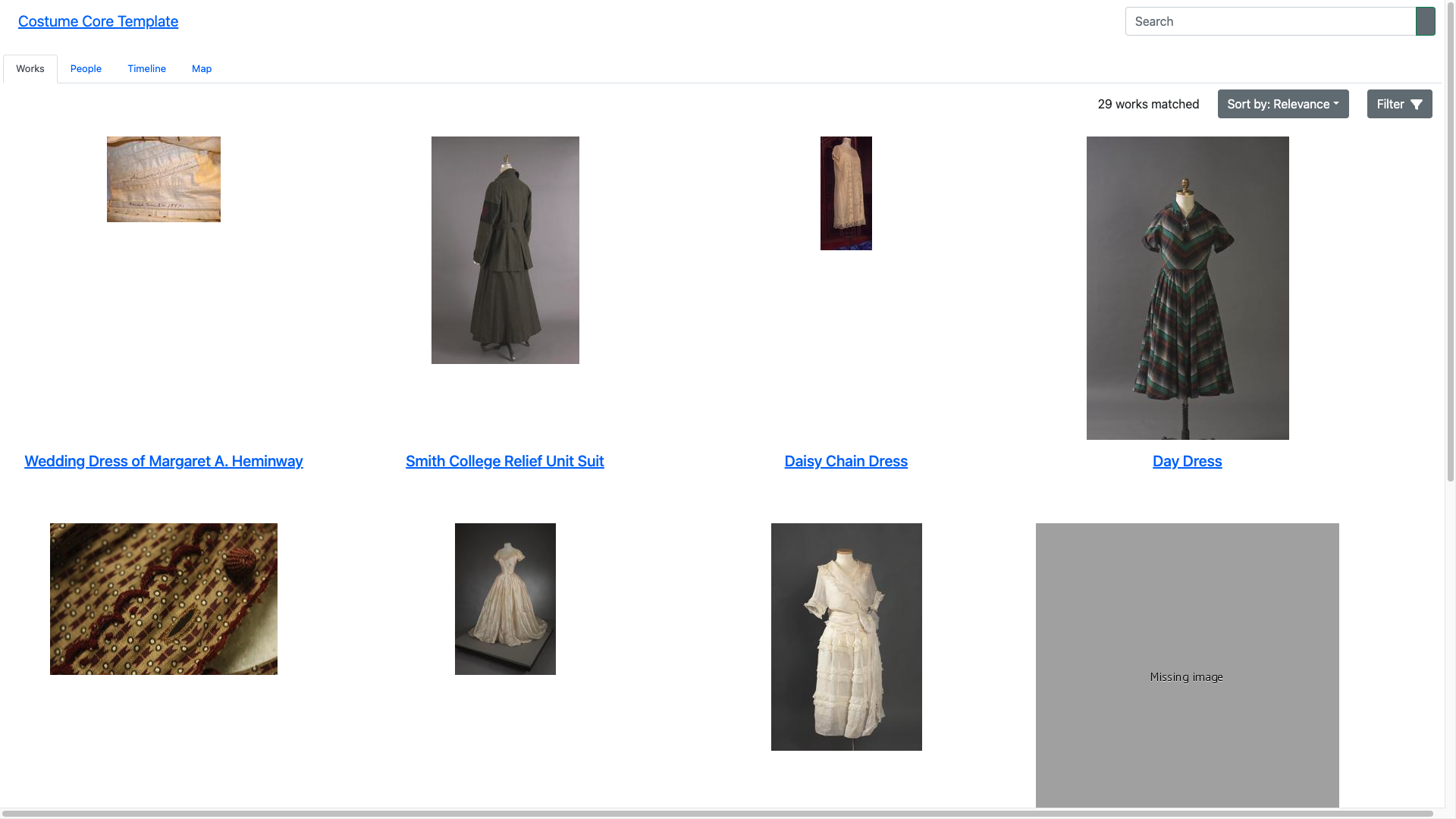Tutorial: generate a faceted search interface for a Costume Core-formatted Airtable base
The tutorial will guide you in creating a web-based faceted search interface for a Costume Core-formatted Airtable base.
You will:
- Generate a website from your Airtable base using GitHub Actions
- Deploy the site using GitHub Pages
The end result will look like:

Before you start
For this tutorial you will need:
- A Costume Core-formatted Airtable base derived from the blank template. The tutorial will use the sample dataset.
- A GitHub account to create a GitHub repository, set up GitHub Actions, and deploy your generated website using GitHub Pages
You do not need to install git or any other software on your computer.
Find your Airtable API base id
Follow these instructions under the Finding IDs in Airtable API -> Base IDs header.
Your Airtable API base ID should resemble appgU92SdGTwPIVNg (which is the ID of the sample dataset). This identifier is specific to the Airtable API, and is not contained in the URL of the base (e.g., https://airtable.com/shryU3j5IXFxjrdEy/tblUeStXG6w5MMGlF/viwlbQDtd6H80rzVw).
Obtain an Airtable personal access token
Follow these instructions to obtain a personal access token.
The personal access token should have at least the following scopes:
data.records:readschema.bases:read
You should limit the token's access to your specific Airtable base.
Create and configure a GitHub repository
Copy the template GitHub repository
Follow these instructions on creating a GitHub repository from a template, using this template repository.
Configure GitHub Pages
Follow these instructions on publishing GitHub Pages with a custom GitHub Actions workflow.
Configure GitHub Actions
Following these instructions, create new repository secrets with the following names and values:
AIRTABLE_ACCESS_TOKEN: the Airtable personal access token you obtained in the step aboveAIRTABLE_BASE_ID: the Airtable API base ID you obtained in the step above
Generate the site
Follow the recipe on manually running a GitHub Actions workflow.
The GitHub Actions workflow is downloading the contents of the Airtable base, transforming them to the Paradicms data model, generating the faceted search interface, and deploying it to GitHub Pages.
Navigate to your site
Follow the recipe on visiting your GitHub Pages site.
Your site is now available on the public Internet, and you can share it with people.